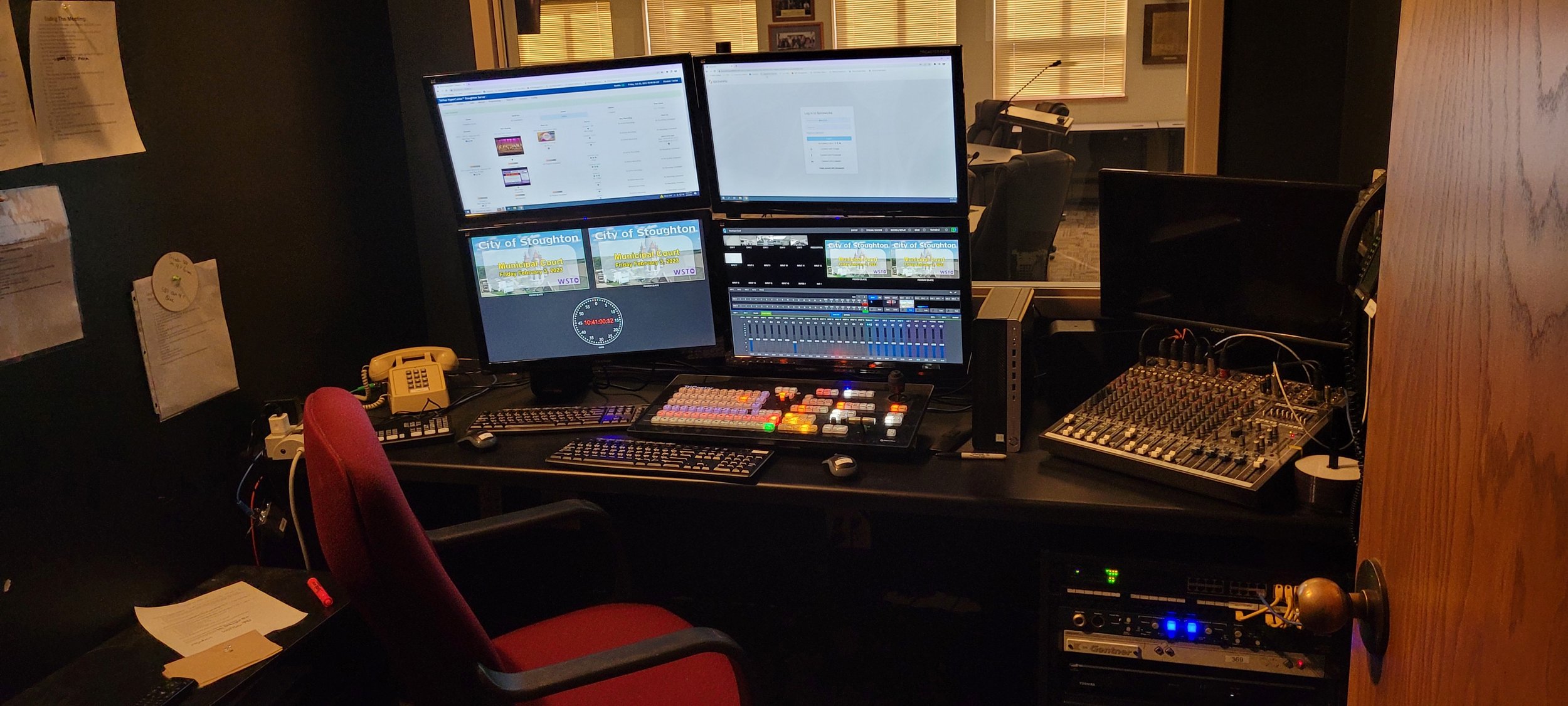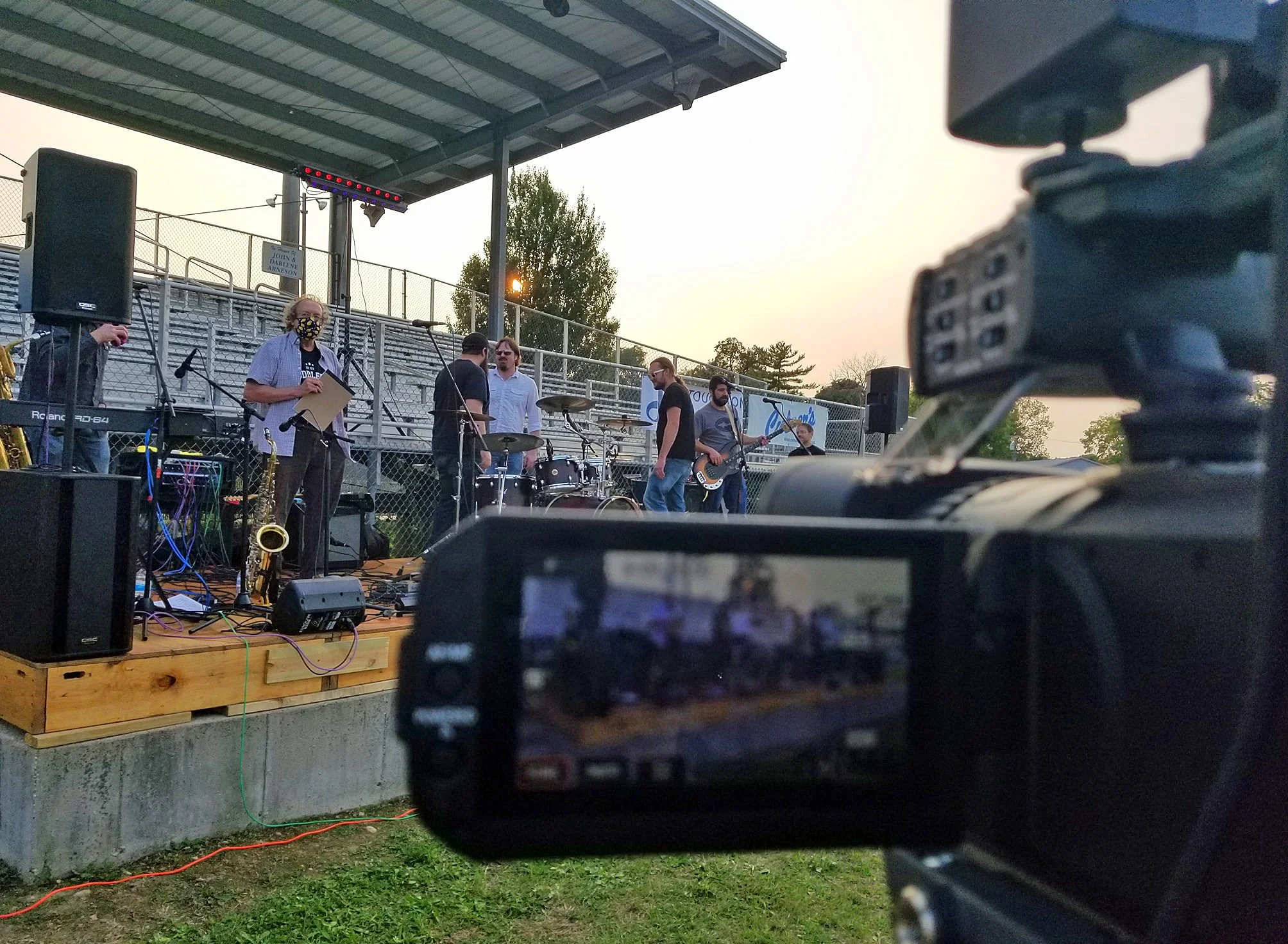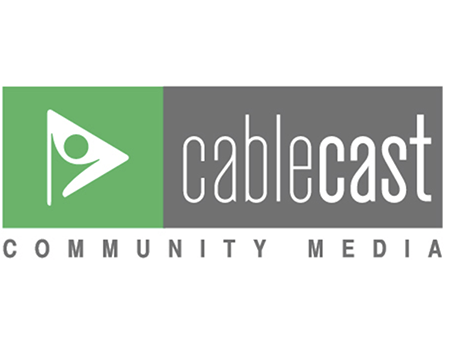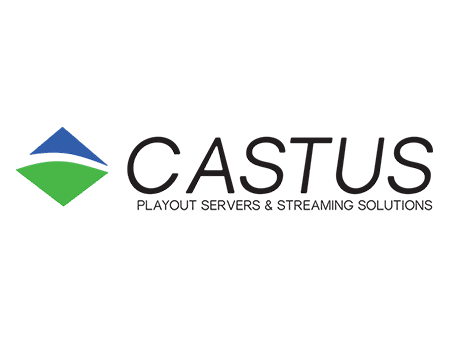Image from WSTO’s coverage of the 2022 Syttende Mai parade.
As many as 20,000 people have been known to descend on Stoughton, Wisconsin, a Norwegian enclave with a population of 12,000, for its annual three-day party to celebrate Syttende Mai. “Syttende Mai” means May 17 in Norwegian and it marks the day in 1814 that representatives of Norway signed a constitution that established it as an independent kingdom. In the 1880’s, 80% of Stoughton residents were of Norwegian descent, and that cultural influence still shapes its community identity. Every year, Stoughton pulls out all the stops to create what may be the second largest celebration in the country, and WSTO, the city-managed PEG (Public, Education, Government) television station puts everything else on hold to put the event on the small screen. Jostling among crowds, WSTO staff covers the action that includes parades, music, costume shows, dancing, and canoe races. “Syttende Mai has always been a hectic, busy time for us, especially pre-COVID when we often had as many as three things to record at the same time. It wasn’t uncommon for a camera person to be hustling down Main Street from a performance at the Stoughton Opera House to do a camera on a multi-camera parade starting just 20 minutes later,” recalled Derek Westby, Senior Network Administrator for the City of Stoughton.
The oldest community access channel
WSTO is thought by many to be the oldest community access channel in the United States. The company that established it, The Viking Media Corporation, received its corporation status with the State of Wisconsin on March 5, 1968. At that time Viking Media was among just 2,000 small cable television systems in the country serving not quite three million people, or about 1.5% of the population of the United States. The story goes that the owners of the company, Bob and Janeen Burrel, received permission to string cable through the city that year, which then had a population of just 6,000, and began producing shows for its “local origination” channel pretty much immediately.
These early systems provided subscribers with access to more broadcast TV channels – channels whose over the air signals didn’t quite reach them or were blocked by hilly terrain. In addition, most provided the communities they served, even small ones, with a local origination channel that focused for the first time on them and only them. To give you even more perspective, Turner Broadcasting System (TBS), a broadcast channel out of Atlanta considered to be the first “cable TV channel,” was not distributed widely via cable until the 1970’s, and HBO, thought to be the first “Pay TV” service, first launched in 1972. “We are very proud of our status as the first community television station,” said Westby, “and we plan to be here for many years to come offering local coverage using whatever technology our residents want to use to get the information they need and want.”
A more standard local franchise agreement, containing provisions like franchise fees, “a local origination” channel programmed by the cable operator, and PEG (public, education, and government) access channels programmed by city residents, is said to have been negotiated between Viking and the City of Stoughton after the system was up. Perhaps it was then that the Viking Media Channel was renamed WSTO TV. But it wasn’t until 1988 that the City of Stoughton took over management of WSTO TV from cable company management.
Today’s WSTO
Today, WSTO is a service of the City of Stoughton IT/Media Services Department and is overseen by the City of Stoughton Community Affairs/Council Policy Committee. WSTO’s production and distribution facility is located on the second floor of the Public Safety Building. John Montgomery is the IT/Media Services Director and Derek Westby, who as the Senior Network Administrator has a full plate of IT duties, oversees WSTO. On a day-to-day basis, the station is managed by Spencer Meier, Media Manager. Westby and Meier have an interesting thing in common: they both began working at the station as part-timers while in high school learning the ropes from the ground up. “Most high school kids don’t start their career while still in high school. Both Spencer and I were lucky enough to do so,” Westby said. Westby started in 2006 and became full-time in 2008 and Meier began in 2016 and became full time in 2021. WSTO’s three part-time media technicians may also just be at the start of a career in PEG television: Jordan Hake (who also works at OCA Media in Oregon), Cameron Johnston and Andrew Vick.
Media Manager Spencer Maier with Lisa Famularo, Director of Watertown TV at the WCM Fall Workshop.
Just as it was an early adopter of cable television, the City of Stoughton today continues to place a high priority on being at the cutting edge of media technology. “We want to reach and interact with everyone in the community no matter how a person prefers to consume media,” said Westby. Today, two cable television providers serve the City of Stoughton. TDS, the modern newcomer, offers customers the Stoughton PEG access channels in High Definition (HD) on channels 12 and 20, while Charter Spectrum, the legacy cable operator, still transmits the PEG channels in the old standard definition (SD) format on channels 980 and 981. Stoughton’s primary channel is called WSTO-TV and it broadcasts programming 24/7 on TDS 12 and Spectrum 981. The Stoughton Information Channel, which promotes local events, city job openings and other city notices, is on TDS 20 and Spectrum 980. This channel also provides real-time weather updates and promotes recently uploaded programs that can be seen on-demand on https://www.wsto.tv.
Promoting its community coverage on several platforms
Making the public aware of how they can view local programming is a top priority according to Westby. “We are planning a large marketing campaign to raise awareness of our station and are adding more OTT Apps in addition to Roku, Apple TV+, and the Android apps we currently use. We hope to make WSTO even more convenient to view,” he said. WSTO also uses social media heavily including YouTube, Facebook and Twitter.
Since Charter moved WSTO from low channel numbers a couple of decades ago, it has been a struggle to help viewers find the channel and keep watching. “Many Spectrum subscribers do not even know we exist because we are carried so high up on the line-up,” said Westby. In addition, viewers get turned off by the fuzzy look of programs. This is caused by Charter Spectrum taking the HD signal provided by the city and downgrading it to Standard Definition. “People can’t read type used in meeting presentations,” said Westby. “So, we’re very excited about being carried in HD on TDS.” Because Charter Spectrum’s decisions have discouraged viewership, Westby has always made it a priority to distribute local programming in a lot of other ways and he directs Charter Spectrum customers to Roku, Apple TV+, and the Android apps it uses as well as the on-demand website at https://www.wsto.tv for HD versions of its programming.
“We recognize that not everyone is comfortable with viewing video online, and that’s why it’s important to continue to use and promote our cable television channels,” said Westby. WSTO frequently covers events and presentations held at the Stoughton Senior Center and produces shows with the Skaalen Nursing and Rehabilitation Center. “We go there and talk to residents about their lives and show the art they are creating. Sometimes we record them reading children’s stories. We believe it’s important for us to record the recollections of our older residents for future generations,” said Westby. WSTO also covers the activities of the city’s youngest residents such as school music concerts.
Programming priorities
Stoughton is justifiably proud of its quaint downtown full of specialty shops, restaurants, and bars, as well as the Stoughton Opera House, a beautifully restored 1901 venue that welcomes a wide range of local, regional, national, and international performers. Just before the holidays, WSTO partnered with the Stoughton Downtown Merchants Association to produce 17 short promos for local businesses highlighting all they have to offer customers on the hunt for gifts and a good time. “We received a lot of great feedback from the community and the downtown merchants loved it,” Westby said. “It also helped raise our profile.”
The main focus of the station, however, is making local government transparent, providing gavel to gavel coverage of Common Council, the Plan Commission, the Finance Committee and Municipal Court. “Often the local weekly newspaper uses our livestream to attend government meetings remotely since it is part of the much larger Wisconsin Media Group which does not necessarily have a reporter close-by to cover Stoughton,” said Westby. In the Madison area, the Wisconsin Media Group owns the Stoughton Courier Hub, the Fitchburg Star, the Oregon Observer, and the Verona Press as well as The Great Dane Shopping News.
WSTO’s newest show is called Council Catchup. The program is designed to help citizens understand what transpired at the most recent City Council meeting. It’s hosted by Westby and features guest Mayor Tim Swadly.
“WSTO works to bring timely coverage of government, school, and community events to those unable to attend in person, and we also produce shows that inform viewers about things they need to know,” said Westby. WSTO is also ready to help residents produce their own content for broadcast and on-demand thorough one-on-one training. “We’re here to help people learn the ropes of video production and produce shows that would be of interest to the community,” said Westby. “Doing local media is a great way to get involved in the life of a city.”
Westby said, “I think that a strong local media covers the stories citizens need to fully understand and participate in community life and it helps people understand and participate in the local government decision making process. Keeping the community informed is important. At WSTO, we believe that the more places people can watch us the better,” said Westby.
Stoughton’s community identity as a Norwegian outpost in America is reinforced by all the coverage WSTO gives its Norwegian celebrations. Syttende Mai is not the only one. WSTO is also at the Coffee Festival every year in August. If you’ve been watching WSTO, you’ll know that Norwegian women in the 1880’s originated the “coffee break.” Hired by a tobacco warehouse to steam tobacco leaves, the women would take turns whisking away to their nearby homes to check on the kids and make sure supper was on track -- and have a little coffee while they were at it.
Sounds like a great reason to break out in a city-wide celebration! You can watch it on WSTO.
















